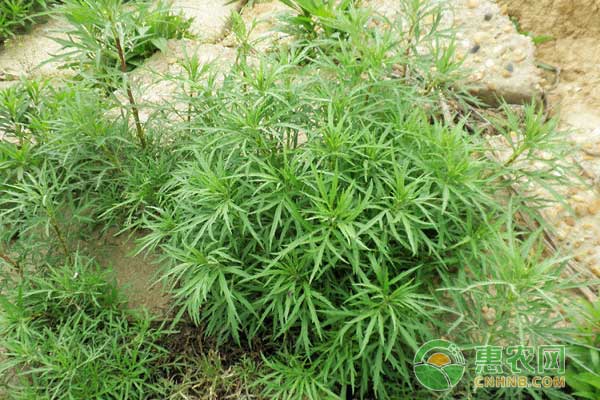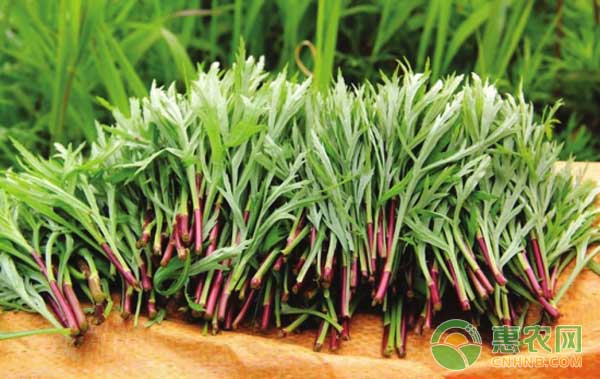Artemisia sinensis planting technique
Artemisia selengensis has a good market and high price in the winter market. It is called "the grass of Poyang Lake, the treasure of the city people." In March, wild or open-planted Artemisia selengensis began to germinate until September-October Xie Miao. Artemisia selengensis can be cultivated in most areas of southern China, and it can also be used to obtain higher benefits by using off-season cultivation techniques. The cultivation techniques of the high yield of Artemisia selengensis (2000-2500 kg per 667 m2) are introduced as follows:
First, the variety selection
Artificial cultivation of Artemisia selengensis should choose varieties with high growth rate, good commodity performance, high yield or local domesticated species.

Second, the terrain selection
Artemisia sinensis should be selected for the soil with flat terrain, convenient drainage and irrigation, deep soil plough layer and high organic matter content, especially in sandy soil.
Third, soil preparation and fertilization
The cultivation of Artemisia sphaeroides should be carried out in depth to facilitate the rooting and germination of Artemisia selengensis. The growth of Artemisia selengensis requires stratified heavy application of base fertilizer: generally 667m2 succulent organic fertilizer 3000-4000 kg or high-quality bio-organic fertilizer 300-500 kg + ammonium bicarbonate 100kg + superphosphate 50kg + compound fertilizer 50kg.
Ditch support: the width of the cabin (groove) 120-140cm, the width of the trench and the depth of 20-30 cm are made into sorghum, which is convenient for field management and is beneficial to drainage and waterlogging and ditch irrigation. For per mu, 72% Duer 60ml or 48% Trifluralin 100-150ml can be sprayed to prevent weeds. After the trench is well-placed, the permeable trench is poured once to fill the compartment with alternatives and cuttings.
Fourth, cutting and planting
Selection: 7 to mid-September, preferably in mid-August. Choose stubble stems that are thick and have no pests and diseases. The lower end of the insert is cut into a bevel to prepare for the cutting of about 250-300 kg.
Cuttings: immersed in water 3 days before cutting. After the cuttings are selected, the ABT rooting powder 100-150ppm solution can be used to soak the base to promote the rooting to increase the survival rate. Then, according to the row spacing of 10 to 15 cm, the plant spacing is 7 to 10 cm, the soil is inserted, and the ground is left for about 3 cm. After the soil is inserted, the soil is immediately poured and the water is refilled once a day after the insertion. The total cutting and colonization requirements are: the insertion is not inserted, the insertion depth is not inserted shallow, and the insertion is not inserted.
Management between the five fields
1, top dressing
7 days after cutting, germination and rooting, when the length is 3cm, 20kg of compound fertilizer will be added. Before the plant is sealed, the same amount of compound fertilizer or urea 10kg will be applied, and the leaves will be treated with 0.3% potassium dihydrogen phosphate or other foliar fertilizer. Face spray fertilizer. After each harvest, the same amount of topdressing should be used.
2, irrigation
After 3-4 days of insertion, the water is immersed once and after germination, the water can be reduced to keep the soil moist. In the future, every time the fertilizer is applied, the ditch will be irrigated once, but not to the surface of the clam, so as not to cause the soil compaction to affect the airflow and cause the cuttings to rot. Pay attention to timely drainage after heavy rain.
3, cultivating weeding
After cutting, the soil is easy to be knotted due to frequent irrigation. Therefore, it is necessary to cultivate the loose soil after germination. Weeds are removed before the plants are closed to avoid affecting the growth of the shoots.
4, between the seedlings
When the seedlings grow to about 3 cm, it is necessary to keep 3 to 4 seedlings per seedling. Otherwise, excessive crowding will cause the commercialization of Artemisia selengensis.
5, scaffolding cold
The optimum temperature for growth and development of Artemisia selengensis is 20-25 °C. When the temperature is below 10 °C in October or when the frost is frozen, the stems and leaves are wilted, and the growth of Artemisia selengensis is slow, but the underground stems can germinate above 5 °C. In order to ensure that the wormwood is listed on the New Year's Day and the Spring Festival, it should be shed for insulation and frost protection before the temperature drops to 10 °C in the middle and late November. Covered with a 0.08 cm thick drop-free film, the length of the shed is 35 to 40 m, the width of the shed is 4.5 m, and the height of the shed is 1.7 m. Keep sunny in the shed at 18 °C ~ 23 °C. At noon when the temperature is high, the shed should be opened at both ends to avoid the temperature being too high. Because of excessive humidity and poor ventilation, the worm is rotten or blackened. When the temperature rises after the Spring Festival, the cover film should be removed in time.

Six scientific harvesting
When the tender plant of Artemisia selengensis grows to 15-25 cm, the top heart leaves have not been scattered, and the color is light green, it is harvested close to the surface. When the temperature is right, harvest it in about 30 days, and when the temperature is low, harvest it in about 50 days. The cut stems are all erased except for a few leaves. Soak them in different coarse sub-levels and soak them in clean water and cover them in a cool place with a damp cloth. After 8-10 hours of softening, it can be launched.
Seven, reasonable seed retention
After harvesting the last mile in March, leave 1:5 to reserve seedlings. If the land area is small, the area will be reduced first, and the area will be expanded after the harvest from June to July.
Artemisia scoparia is rich in nutrients, easy to manage, and economically efficient, so it is suitable for planting in autumn and winter.
Gelatin Size 3 Empty Capsule,Mixed Green Empty Capsules,Size 3 Empty Gel Capsule,Medical Clear Empty Hard Gelatin Capsules
Ningbo Jiangnan Capsule Co., Ltd. , https://www.ningbocapsule.com